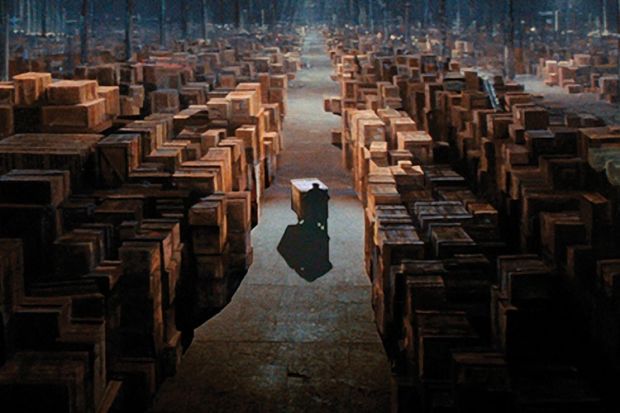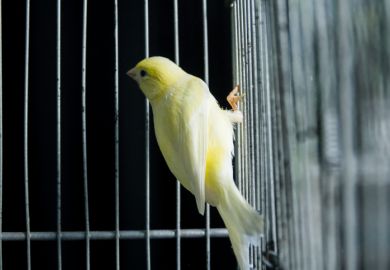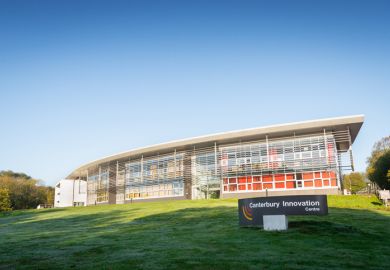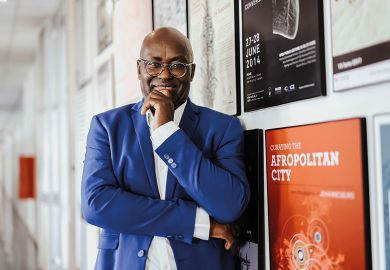The Indiana Jones warehouse. That is where William Pannapacker claims much of the output of students and staff in the liberal arts ends up – in the figurative obscurity represented by the seemingly infinite, but sealed off, government storeroom where the fictional archaeologist’s discovery – the Ark of the Covenant – is placed at the end of Raiders of the Lost Ark.
Pannapacker is a humanities professor too – in his case, of English literature, at Hope College in Michigan – and he wonders whether in today’s world someone like Jones would ever have found a job outside academia.
“We want liberal arts majors to take their educations out into the world, not just end up in graduate school,” with their research unread, he says.
Pannapacker has become an evangelist for the emerging concept of digital liberal arts, combining collaborative undergraduate research with work experience and digital literacy to create what he calls “the super liberal arts graduate for the 21st century”.
In the US, the idea is spreading fast. Thirteen institutions in the Midwest have just convened a conference aimed at fostering collaboration among their liberal arts departments using digital communication. In addition, Middlebury College in Vermont has hired a postdoctoral fellow in the digital liberal arts, and Whittier College in California and five liberal arts universities in eastern Pennsylvania have also picked up on the idea.
“We’re trying to create a culture in which we can figure out how to use what’s going on in the digital world to enhance what we do in the liberal arts,” Pannapacker says.
Not coincidentally, digital competency, teamwork and practical experience are precisely what employers have been saying they want – and often fail to get – from graduates. The idea of incorporating them into the curriculum comes at a time when liberal arts institutions in particular are under pressure from businesses, students and students’ families to demonstrate that they are teaching practical skills in exchange for high tuition fees.
“It is, to some extent, about closing the gap between what the job market expects today and what the liberal arts produce,” says Pannapacker. Employers, he adds, “love liberal arts students, but they need somebody to fix their website too”.
Talking about making students more employable, however, creates a difficult balance for backers of the digital liberal arts, since academics bristle at the suggestion.
“There are faculty who look at this with a little bit of suspicion, because it’s different from what they’ve done,” says Tim Spears, vice-president for academic development at Middlebury.
However, Greg Wegner, director of programme development for the Great Lakes Colleges Association, who ran the Midwest conference, insists that “none of the faculty members who have come to our workshops have done so because they’re feeling pressure from their institutions to be more practical”.
“This is work that’s in support of a liberal arts mission,” he adds. “The gathering of information, the formulation of understanding, and conveying your thinking in a compelling way to a broad audience – those are perfectly in line with a traditional liberal arts tradition.”
Education v vocation
But the obvious connection with the broader debate over whether the purpose of higher education is to impart knowledge or train workers has supporters of the digital liberal arts treading carefully.
“To a great extent, ‘digital liberal arts’ puts the cart before the horse. It’s not about the digital, principally; it’s about the mission. I want to be very careful in being clear that this is not about rejecting the liberal arts to embrace some careerist vocationalism,” Pannapacker says.
“This is not a critique of liberal arts education, per se,” he adds. “It enables students to get their work out there in a way that’s globally digital, instead of being filed away never to be seen again.”
What digital liberal arts seeks to do is bring liberal arts degrees out of the Indiana Jones warehouse, Pannapacker says.
“The classic mode of work in the humanities disciplines tends to be the lone scholar in the library carrel doing things essentially as an independent researcher,” says Wegner.
The digital liberal arts brings students together with other students and academics together with other academics to work collaboratively, as is common in the sciences, he adds. “It’s not a diminution of the liberal arts mission. It offers another mode for that work to take place.”
That could mean working on multidisciplinary and cross-institutional projects such as Digital Harlem, an effort to chronicle the history and sociology of America’s most cosmopolitan black neighbourhood from 1915 to 1930, or the Encyclopedia of Greater Philadelphia, which is a digital compilation of the story of one of America’s most historic cities. Both online projects involve university students and staff, and both are widely used.
“These projects are flowering all over the country,” Pannapacker says.
Students can also use digital tools to do their work, for example, digitising and then analysing census information from a Harlem tenement over time.
“People who do this kind of work would emphasise that it’s not simply that you’re transferring analogue materials into digital formats,” Spears says. “It’s about using the digital space as a new tool for research.”
Register to continue
Why register?
- Registration is free and only takes a moment
- Once registered, you can read 3 articles a month
- Sign up for our newsletter
Subscribe
Or subscribe for unlimited access to:
- Unlimited access to news, views, insights & reviews
- Digital editions
- Digital access to THE’s university and college rankings analysis
Already registered or a current subscriber? Login





